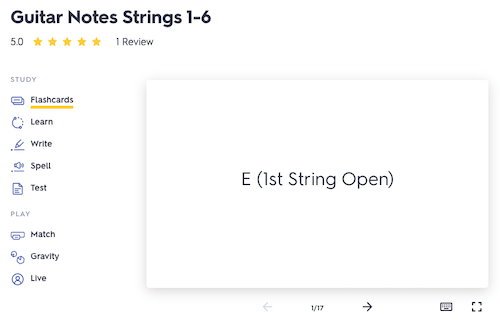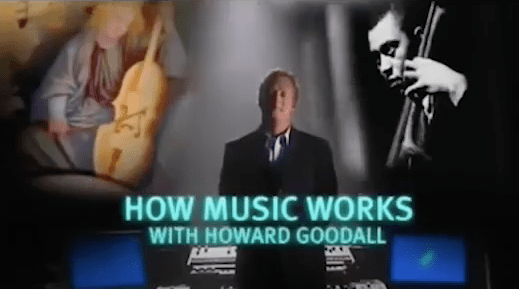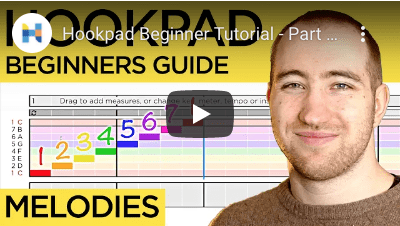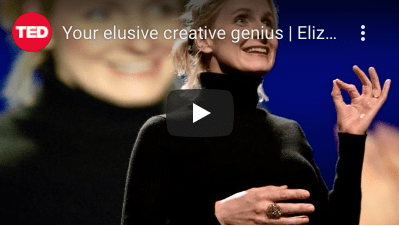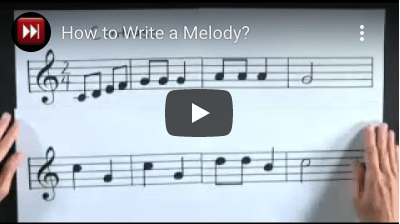
Music was my refuge. I could crawl into the space between the notes and curl my back to loneliness. – Maya Angelou
SUMMARY
- I liked learning more about music theory, and some of the terms that go with it. Some of the materials have, in a way, kind of shown me that making music isn’t as complicated as I thought; admittedly, I was kind of dreading making music for this class, because I worry I’m not creative enough in that department.
PRACTICE ROOM (TUTORIALS)
- https://www.youtube.com/watch?v=OEV_FQ7–WU
- https://www.youtube.com/watch?v=ayXgU3o28FE
- I used these two tutorials to learn what it means to be ‘in-tune’, and how to tune a bass by ear.
CLASSROOM (THEORY & ANALYSIS)
- The underlying techniques and tricks that go into making good music spans across multiple styles and genres.
- It’s possible for people to remember melodies that they heard even while in the womb.
- “Tunes can act as a bridge between cultures when language fails us.”
- A large number of melodies throughout history have been based on a pentatonic shape.
- There are 3 main elements to a melody: the notes, their pitch, and their pattern.
- “Blue-notes” are notes that have been flattened for expressive purposes.
LAB (THEORY PRACTICED)
- I learned what hotkeys you can use to change the duration of a note in the melody section, and how to change and add different instruments.
OUTSIDE (CREATIVITY & THE BRAIN)
- I think it’s interesting the way Ruth Stone described the process of inspiration; a sort of external force that comes barrelling through you, if only for a moment. Lord knows that’s happened to me multiple times, as a writer myself. It’s specifically why I’ve taken to having a notes app on my phone; so that I can write down my ideas and inspiration from anywhere before they get lost.
STUDIO (SONGWRITING)
Melody Composition Terms
- Theme – A longer, more flowing melodic idea.
- Motive – A short, rhythmic idea.
- Period – Eight measures of music.
- Phrase – A set of four measures of music.
- Antecedent (Question) Phrase – The first phrase of music.
- Consequent (Answer) Phrase – The second phrase of music.
- Scale Degrees
- Tonic – The note that determines the key of the melody.
- Supertonic, Mediant, Submediant – Scale degrees with a moderate level of tension.
- Dominant, Subdominant, Leading Tone – Scale degrees that create a high level of tension in the melody.
- Steps – Any movement using whole or half steps.
- Leaps – Any movement using intervals larger than a whole step.
- Conjunct motion – A melody built primarily out of steps.
- Disjunct motion – A melody built primarily using leaps.
- Repetition – The use of repeated material to create a link between the two phrases of a period.
- Contrast – Two phrases that contain contrasting material to create tension and interest.
- Variation – Halfway between repetition and contrast. Both phrases include familiar and varied material.
Melody Resources
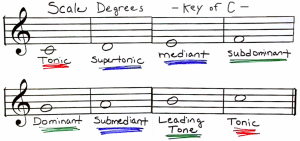

Mr. Le Duc’s Key of C Major Notes and Chords Chart (PDF)
WHAT I LEARNED and PROBLEMS I SOLVED
- Today, I figured out how to use Hookpad. Admittedly, up until this point, I didn’t even know that the website could be used to make music as well as analyze existing songs. I had a bit of trouble with the formatting of this post itself, but I was able to get it down using the example post.
